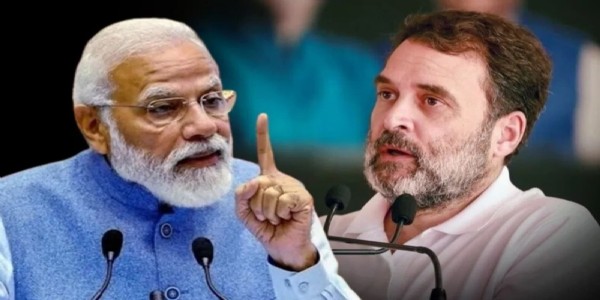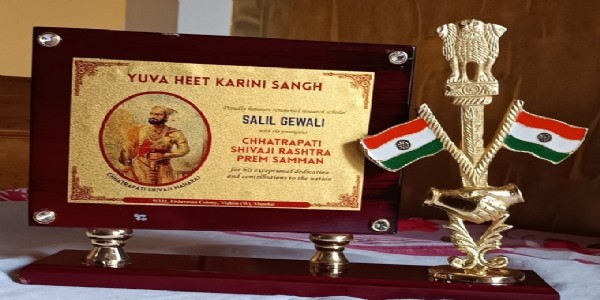Sardar Vallabhbhai Patel who united Bharat
Total Views | 377
Sardar Vallabhbhai Patel, a freedom fighter who became India's first home minister and deputy prime minister, is remembered for his selfless services to the nation for the sake to protect the unity, integrity, and sovereignty of the country. He not only played a significant role in India's independence but also a much more vital role in post-independence.
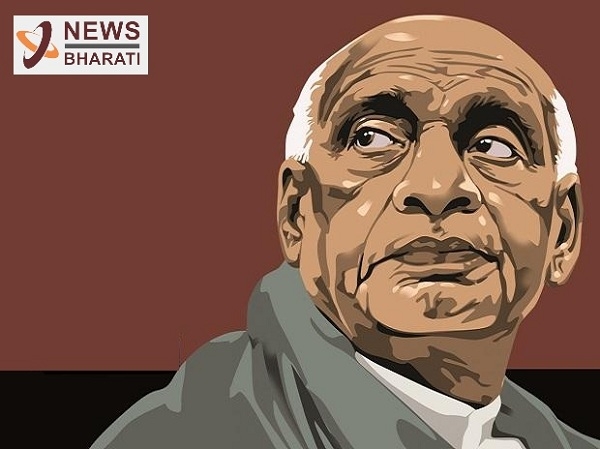
Popularly known as the Iron Man of India, Sardar Patel passed away on this day, December 15, in the year 1950. Known as the 'Ironman' of India, he was instrumental in India's independence struggle, and then for the integration of over 500 princely states into the Union of India. When one thinks of him, there is just so much he has done for the country for independence and unifying current India, it is next to impossible to explore his life in one single article.
Having said that, if one were to choose one part of his life, it would be the way he integrated, 500 odd princely states, into one nation. It is nearly unimaginable and impossible to deal with multiple princely states that have their own ceratin hurdles to cross. Further, convincing them and welding them into one single nation, it has another obstacle.
During Independence Struggle
Firstly, India became independent, it was already enough to deal with the trauma of Partition, the Pakistan attack on Kashmir, and there was Hyderabad to deal with. It would surely need a man of iron will to surmount these challenges, and it had to be Sardar Patel. The difficulty level was high even Father of Nation, Mahatma Gandhi said -“The problem of states is so difficult, you alone can solve it”.
The determination was something, that was bred in Sardar Patel, since his childhood days. When he just about managed to pass the matriculation exam, people around him felt he would settle in a certain ordinary job, not many really foresaw his greatness. However, something else was waiting for him. He was determined to be a lawyer, travel to England for higher studies in law, become a barrister. With fierce determination, he graduated from Middle Temple, studying with books he borrowed from other lawyers.
During India's independence struggle, his first encounter took place when he led the struggle against the system of veth or forced labor in Gujarat. In 1917, peasants in Kheda of Gujarat, protested against the taxation imposed by the British, as they were suffering from famine and plague. Gandhi was seeking some one who could lead the peasant’s struggle in Kheda, as he was tied down at Champaran, it was Sardar who took it up. Sardar later stated that his decision to lead the struggle in Kheda, came after contemplation as he would have to give up his career. He went from door to door, mobilizing peasants not to pay taxes. When the British cracked down on the Kheda revolt, it was Sardar Patel, who helped the peasants hide themselves and their valuables.
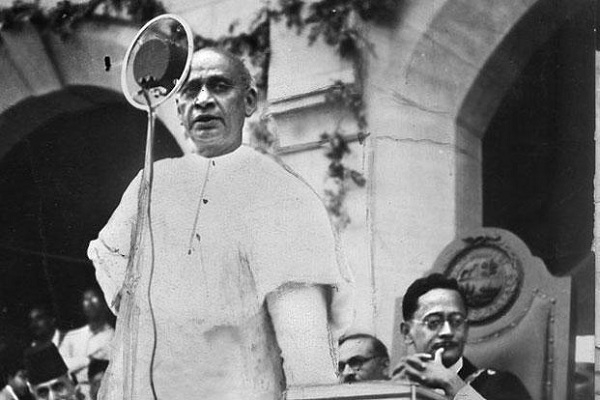
On the other hand, the British finally agreed to negotiate with Sardar Patel and henceforth suspended the payments of revenue in Kheda. Further, he highly participated in the Non-Cooperation Movement, Salt Satyagraha, and Quit India Movement alongside Mahatma Gandhi. On 7 Aug 1942, Sardar Patel, gave one of the finest speeches ever to the vast crowd assembled at Gowalia Tank during Quit Indian movement, which motivated the nationalists. Once again his organizing skills came to the fore during the Quit India movement, which played a major role there.
Integration of Princely States
His biggest achievement would be the integration of the princely states and British provinces into one nation. When India became independent in 1947, there were two distinct entities, one that was directly under the British, and other the Princely states, under the British crown. Apart from these there were the colonial enclaves of French( Pondicherry) and the Portuguese( Goa). This how the map of India looked like during the British era, so one can just imagine the magnitude of the challenge.
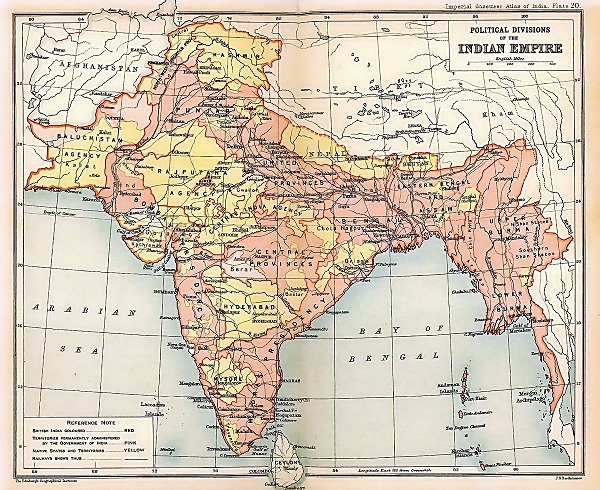
The concerns of the Princely states, would have to be taken into account, and balanced with the need for Accession. He addressed their concerns. However, the major issue he had to deal with was that of the Princely states, each of which had their own concerns and apprehensions to be dealt with. Bhopal, Hyderabad, Travancore, did not want to go along with India or Pakistan, and sought independent status.
Both Hyderabad and Travancore reached out to Western nations for support, while Bhopal began to work upon an alliance with other princely states and the Muslim League in it’s favor. However, the lack of unity among the princely states, meant the resistance fell flat. In addition to it, most of the smaller princely states were apprehensive of being dominated by the larger states.
There was another factor, that helped Patel’s cause was the Muslim League’s decision to stay out of the Constituent Assembly, that meant Bhopal’s plan did not work out. In most of the princely states, the ordinary people favored integration with India, like in Travancore.
The three persons who played a key role in the integration were Patel himself, Mountbatten and V.P.Menon. Patel promised a more federal structure, where the States would be treated as equals than subordinates under the Union. There were other issues with border states like Jodhpur, whose ruler Hanwant Singh, was dead against Congress. Along with Jaisalmer, he began to negotiate with Jinnah, who saw this as a god-given opportunity to gain control of strategic border areas.
However the overwhelming support among the subjects of these two states, made the rulers change their minds, and both acceded to India. Junagadh’s ruler wanted to accede to Pakistan, however, the neighboring princely states vehemently opposed this idea. Patel pointed out that Junagadh being 80% Hindu should be part of India. Simultaneously all food supplies, communications, to Junagadh were cut off, forces were sent to its border. With the Nawab fleeing to Pakistan, it was taken over.
The Actual Integration Process
Later, there was the task of completing the integration process, again each state had its own legislature and administrative setup, that Patel had to consider. The first step was to merge the smaller princely states, with other larger states to create a union. In December 1947, princely states in Odisha, Bihar, Central India signed merger agreements, forming part of those states by January 1, 1948. During, 1948- 66 smaller states in Kathiawar, and some in the Deccan, were merged with the Bombay Presidency. These included Kolhapur, Baroda to create Bombay state, which would later split into Maharashtra and Gujarat.

Other states were merged with Assam, United Provinces( now UP), Madras, East Punjab, and West Bengal. 30 states of the erstwhile Punjab Hill States Agency were integrated into Himachal Pradesh, which was directly under the control of the Center, as it was a sensitive border state. Some of the larger princely states like Kutch, Bhopal, Tripura, Manipur, were directly brought under Central control. All the smaller princely states in Kathiawar were merged with Saurashtra.
Madhya Bharat emerged in 1948, which consisted of Gwalior, Indore, and smaller princely states. PEPSU( Patiala and East Punjab States Union) was formed on July 15, 1948, with the merging of Patiala, Kapurthala, Jind, Faridkot. By May 1949, most of the Rajput princely states were integrated into the United State of Rajasthan. By mid-1949, Travancore and Cochin merged to form Travancore-Cochin, which would later be Kerala. Madras Presidency was divided and neighboring princely states were merged to form Karnataka( erstwhile Mysore State), Kerala( Travancore-Cochin), Andhra Pradesh( Ceded districts and Coastal area).
The other major contributions
Sardar Patel also played a key role in drafting the Constitution of India and backed the appointment of Dr.Ambedkar as Chairman. The Kaira District Milk Producers Cooperative was formed with Sardar Patel’s guidance, and it would be a predecessor to Amul. He was also instrumental in creating the IAS and IPS, has also been regarded as the father of Indian civil services. He backed the bureaucrats fully, gave them a free hand, listened to them, the reason why they respected him so much.
When Sardar Patel passed away in 1950, 1500 civil servants attended his funeral, to pledge complete loyalty to service of the nation. Though he is no longer with us, his legacy remains in the form of a united India. On his death anniversary, let us pay a silent tribute to the man, who unified multiple princely states into one single nation, and to whom we owe a lot.
(This article was based on a Twitter Thread)



